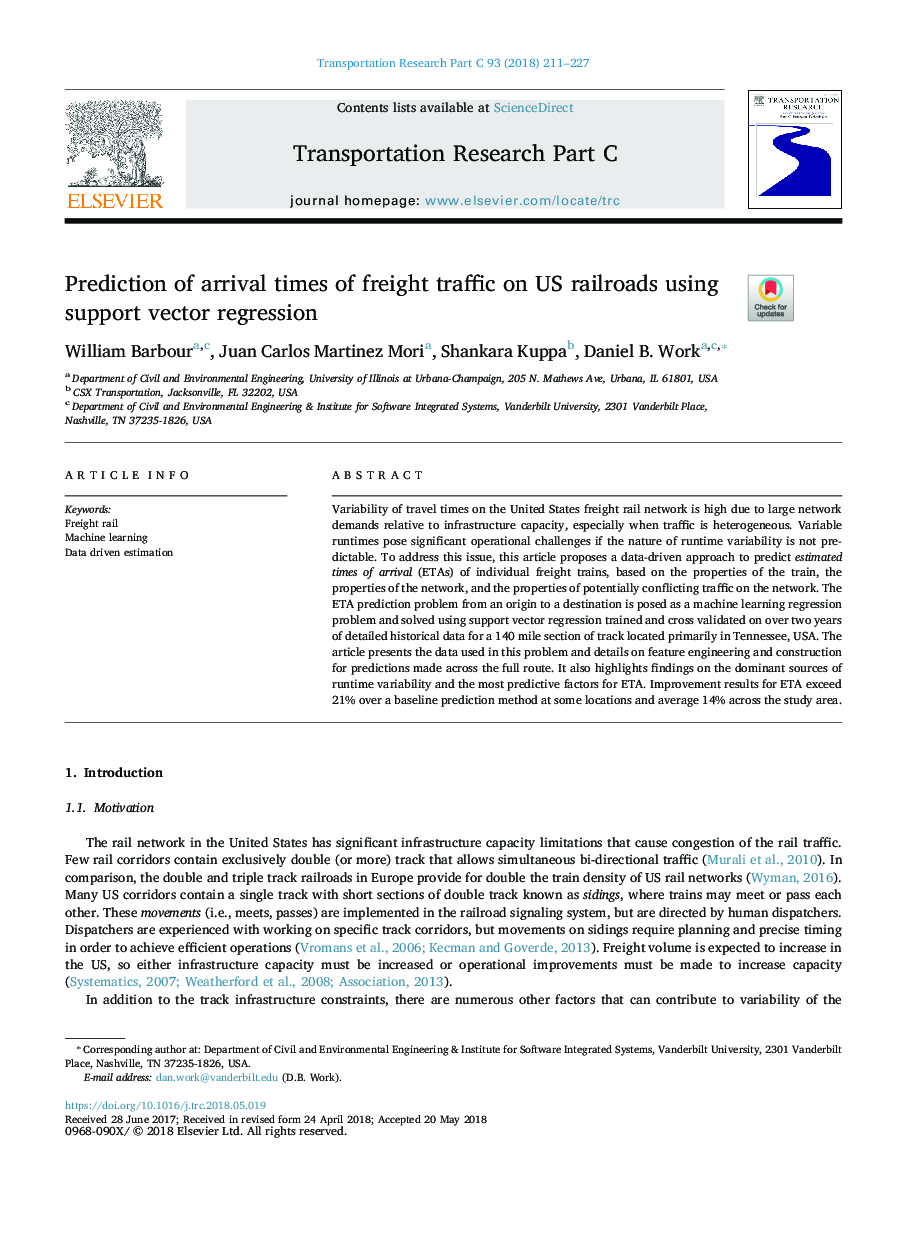| Article ID | Journal | Published Year | Pages | File Type |
|---|---|---|---|---|
| 6935750 | Transportation Research Part C: Emerging Technologies | 2018 | 17 Pages |
Abstract
Variability of travel times on the United States freight rail network is high due to large network demands relative to infrastructure capacity, especially when traffic is heterogeneous. Variable runtimes pose significant operational challenges if the nature of runtime variability is not predictable. To address this issue, this article proposes a data-driven approach to predict estimated times of arrival (ETAs) of individual freight trains, based on the properties of the train, the properties of the network, and the properties of potentially conflicting traffic on the network. The ETA prediction problem from an origin to a destination is posed as a machine learning regression problem and solved using support vector regression trained and cross validated on over two years of detailed historical data for a 140 mile section of track located primarily in Tennessee, USA. The article presents the data used in this problem and details on feature engineering and construction for predictions made across the full route. It also highlights findings on the dominant sources of runtime variability and the most predictive factors for ETA. Improvement results for ETA exceed 21% over a baseline prediction method at some locations and average 14% across the study area.
Keywords
Related Topics
Physical Sciences and Engineering
Computer Science
Computer Science Applications
Authors
William Barbour, Juan Carlos Martinez Mori, Shankara Kuppa, Daniel B. Work,
